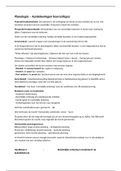Resume
Summary Papers Brand Management | Marketing Management | Tilburg University |
- Cours
- Établissement
Summary of all papers of Brand Management Tilburg University written in school year . Contains all papers that are compulsory for the exam.
[Montrer plus]












